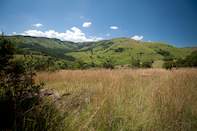Seat of Government
Established in 1895 on the farm Geluk, Machadodorp (now also known as eNtokozweni) owes its name to Joaquim Machado, who surveyed the route of the railway line between Pretoria and Lourenço Marques (Maputo) in 1883. Machado later became Governor-General of Mozambique.

At the end of May 1900, the South African (ZAR) government retreated to Machadodorp in Mpumalanga where it conducted its business from a railway car. It became the capital of the country for a few months.
Machadodorp was proclaimed a municipal town in 1904. During the Second Boer War, as the Transvaal Volksraad made the town their temporary seat, they used railway carriages as their offices and mint after they had to evacuate Pretoria in the face of a British invasion. However, as the war ended and years passed, the train station closed in 2001.
Battle of Bergendal
During the Boer War, after the disaster at Paardeberg, the Boers kept on fighting the British all the way up to Bloemfontein, then Johannesburg, winning some battles but steadily losing the war. Pretoria was captured on 5 June 1900, effectively ending the war, and still the Boer forces fought on. The Kruger government escaped eastwards to Lorenzo Marques (now Maputo), supposedly taking the Kruger bullion with them over the escarpment at Waterval Onder.
The last pitched battle was fought on the lovely rolling highlands of Mpumalanga, between Belfast (now eMakhazeni) and Machadodorp (now eNtokozweni). It was a bloody five-day feud, culminating in the famous 'last stand' by 70 men of the Zuid-Afrikaansche Rijdende Politie, a special mounted police corps facing the might of Buller's Natal Field Force. A lonely, soaring monument marks the spot on the N4 midway between eMakhazeni and Emgwenya (Waterval Boven).